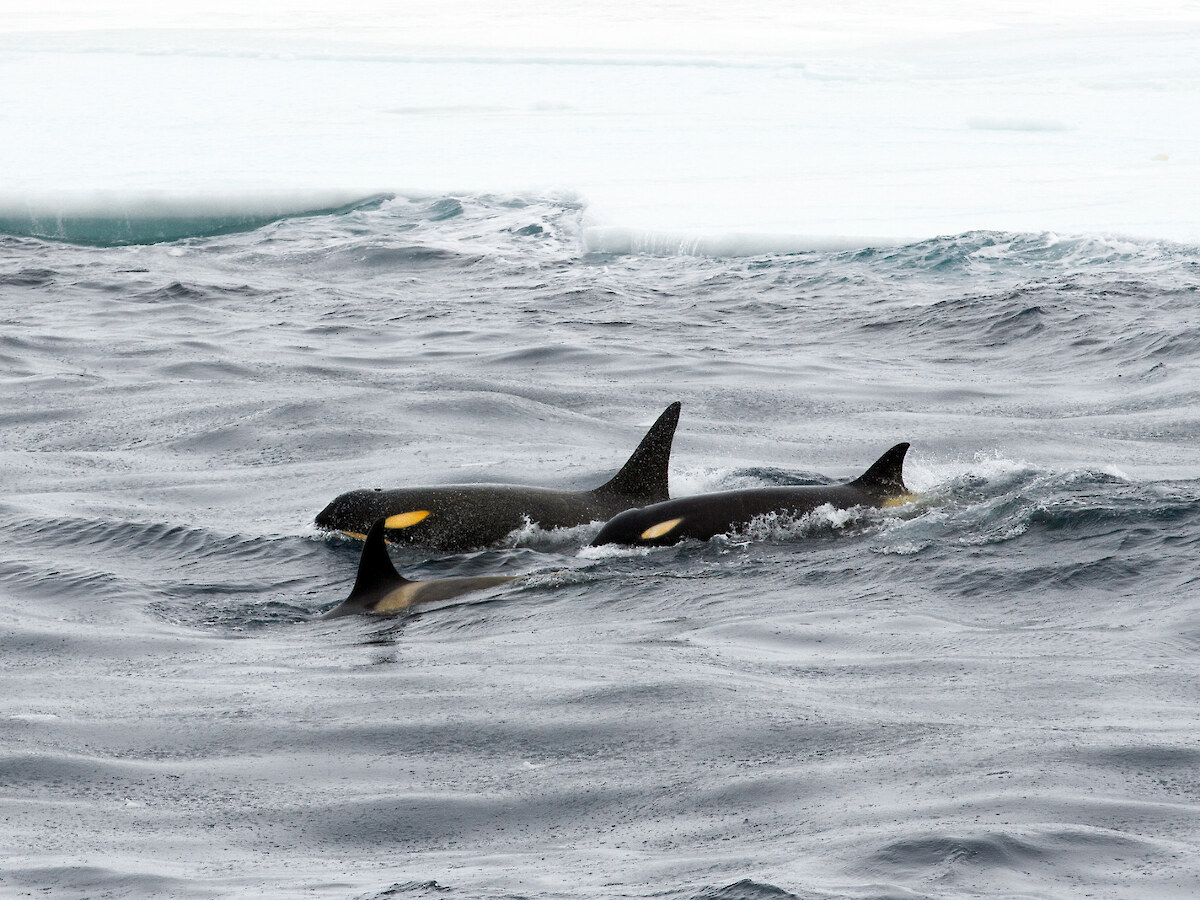Murihiku Team Continues Killer Whale Research Programme
 Curious Antarctic Type-C killer whales head towards the Murihiku zodiac (far left) to have a look at their visitors. Photo: Colin Aitchison
Curious Antarctic Type-C killer whales head towards the Murihiku zodiac (far left) to have a look at their visitors. Photo: Colin Aitchison
Kākahi-killer whales hunt prey as varied as fish, penguins, seals, and minke whales, and are the top predators of the ocean. The fish-eating Type-C Antarctic killer whale (TCKW) is a designated focal species for research in the Ross Sea region Marine Protected Area (MPA). The reason for this special attention is that the Ross Sea fishery is potentially competing with TCKW for Antarctic toothfish (Dissostichus mawsoni), a large, high-fat fish thought to be a favourite food for killer whales, Weddell seals, and parāoa in the Ross Sea region.
 Operating in a zodiac provided by Heritage Expeditions, the Murihiku Team had the opportunity to come face to face with the killer whales like this magnificent adult male. Photo: Regina Eisert
Operating in a zodiac provided by Heritage Expeditions, the Murihiku Team had the opportunity to come face to face with the killer whales like this magnificent adult male. Photo: Regina Eisert
Following the retreating sea ice south on the Heritage Adventurer, this week the Murihiku Expedition team reached McMurdo Sound, a known hotspot for Antarctic killer whales (Orcinus orca). In 2013, Murihiku ki Te Tonga Science Lead Dr Regina Eisert started the first Antarctic killer whale research programme in and for the Ross Sea region MPA to find out what the whales eat, how many there are, and how and when they move between the Ross Sea and New Zealand. To find out, killer whales are photographed to uniquely identify individuals (photo-ID), and their behaviour is observed from the air and with underwater cameras. Photo-ID allows tracking of whale movements when they are re-sighted in New Zealand waters or as far north as Australia.
 As part of the scientific research programme, killer whales are filmed underwater. Here they are having a closer look at the underside of the zodiac. Photo: Murihiku ki Te Tonga
As part of the scientific research programme, killer whales are filmed underwater. Here they are having a closer look at the underside of the zodiac. Photo: Murihiku ki Te Tonga
Field work on the Ross Sea killer whales was interrupted in 2020, but the programme was successfully re-launched during the inaugural Murihiku ki Te Tonga expedition in February 2023. Zodiac support provided by Heritage Expeditions allowed the Murihiku Team to move effortlessly among the ice floes and study the whales up close using underwater video and a small drone.
Although it is not clear who studied whom, as one group of whales after another made a beeline for the zodiac and gave it a thorough inspection. Access to boat support is a new capability for the Antarctic killer whale research programme and gives a fantastic boost to the scientific work.
 Type-C killer whales are distinguished from other killer whales by their distinctive narrow, upward-sloping eye patches. This type is at home in the icy waters of the southern Ross Sea but also visits New Zealand. Photo: Regina Eisert
Type-C killer whales are distinguished from other killer whales by their distinctive narrow, upward-sloping eye patches. This type is at home in the icy waters of the southern Ross Sea but also visits New Zealand. Photo: Regina Eisert
Posted: 27 January 2024
